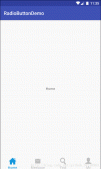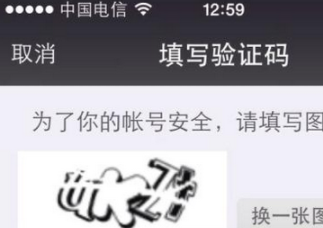Android客户端请求服务器端的详细解释
1. Android客户端与服务器端通信方式:
Android与服务器通信通常采用HTTP通信方式和Socket通信方式,而HTTP通信方式又分get和post两种方式。
2. 解析服务器端返回数据的解释:
(1).对于服务器端来说,返回给客户端的数据格式一般分为html、xml和json这三种格式。
(2). JSON(Javascript Object Notation)是一种轻量级的数据交换格式,相比于xml这种数据交换格式来说,因为解析xml比较的复杂,而且需要编写大段的代码,所以客户端和服务器的数据交换格式往往通过JSON来进行交换。
3. Android中,用GET和POST访问http资源
(1).客户端向服务器端发送请求的时候,向服务器端传送了一个数据块,也就是请求信息。
(2). GET和POST区别:
A: GET请求请提交的数据放置在HTTP请求协议头(也就是url)中,而POST提交的数据则放在实体数据中,安全性比较高。
B: GET方式提交的数据最多只能有1024字节,而POST则没有此限制。

注意:考虑到POST的优势,在Android开发中自己认为最好用POST的请求方式,所以下面自己写了一个小的POST请求的例子。代码如下:
|
1
2
3
4
5
6
7
8
9
10
11
12
13
14
15
16
17
18
19
20
21
22
23
24
25
26
27
28
29
30
31
32
33
34
35
36
37
38
39
40
41
42
43
44
45
46
47
48
49
50
51
52
53
54
55
56
57
58
59
60
61
62
63
64
65
66
67
68
69
70
71
72
73
74
75
76
77
78
79
80
81
82
83
84
85
86
87
88
89
90
91
92
93
94
95
|
package com.scd.jsondemo.util;import java.io.IOException;import java.io.UnsupportedEncodingException;import java.util.ArrayList;import java.util.List;import org.apache.http.HttpEntity;import org.apache.http.HttpResponse;import org.apache.http.NameValuePair;import org.apache.http.client.ClientProtocolException;import org.apache.http.client.HttpClient;import org.apache.http.client.entity.UrlEncodedFormEntity;import org.apache.http.client.methods.HttpPost;import org.apache.http.impl.client.DefaultHttpClient;import org.apache.http.message.BasicNameValuePair;import org.apache.http.protocol.HTTP;import org.apache.http.util.EntityUtils;import org.json.JSONException;import org.json.JSONObject;public class JsonUtil { /** 地址 */ private static final String INNER_URL = "http://localhost:8080/index2.jsp"; /** TAG */ private final String TAG = getClass().getSimpleName(); private static final int USER_ID = 1; /*** * 客户端调用的方法:传递参数向服务器中发送请求 * * @param userId * @param userName * @return */ public static JSONObject getData(String userId, String userName) { int modelId = USER_ID; List<NameValuePair> list = new ArrayList<NameValuePair>(); list.add(new BasicNameValuePair("userId", userId)); list.add(new BasicNameValuePair("userName", userName)); return doPost(modelId, list); } /** * 请求服务器的方法 * * @param model * @param paramList * @return */ private static JSONObject doPost(int model, List<NameValuePair> paramList) { // 1.创建请求对象 HttpPost httpPost = new HttpPost(INNER_URL); // post请求方式数据放在实体类中 HttpEntity entity = null; try { entity = new UrlEncodedFormEntity(paramList, HTTP.UTF_8); httpPost.setEntity(entity); } catch (UnsupportedEncodingException e1) { e1.printStackTrace(); } // 2.创建客户端对象 HttpClient httpClient = new DefaultHttpClient(); // 3.客户端带着请求对象请求服务器端 try { // 服务器端返回请求的数据 HttpResponse httpResponse = httpClient.execute(httpPost); // 解析请求返回的数据 if (httpResponse != null && httpResponse.getStatusLine().getStatusCode() == 200) { String element = EntityUtils.toString(httpResponse.getEntity(), HTTP.UTF_8); if (element.startsWith("{")) { try { return new JSONObject(element); } catch (JSONException e) { e.printStackTrace(); } } } } catch (ClientProtocolException e) { e.printStackTrace(); } catch (IOException e) { e.printStackTrace(); } return null; }} |
















